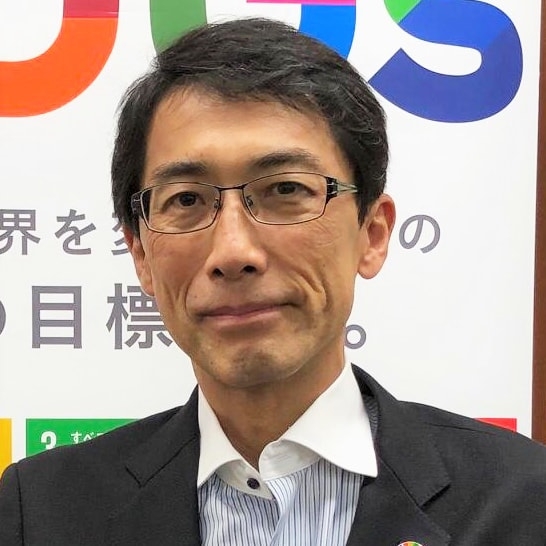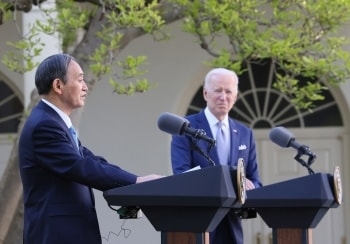Japan’s stance against climate change: bold national targets and assistance for emerging countries
Every nation is facing the stark reality of climate change. To tackle such a global challenge, the world’s leaders are accelerating their efforts, both nationally and globally in cooperation with developing countries. For this reason, Mr. ONO Keiichi , Director-General and Assistant Minister for Global Issues, the Ministry of Foreign Affairs, has defined 2021 as the “Year of Climate Action,” by highlighting the US return to the Paris Agreement, the Leaders Summit on Climate, the G7 summit at Cornwall, and COP26 in Glasgow. To keep the “green momentum,” he said, common efforts are needed. Mr. Ono recently shared Japan’s role on climate diplomacy at the conference with the Foreign Press Center Japan (FPCJ).

Director-General for Global Issues ONO Keiichi spoke via remote connection to the Foreign Press Center Japan on the nation’s climate stance.
2050: “Carbon Neutrality Japan”
At the Leaders Summit on Climate in April 2021, Mr. Ono said he was impressed by the enthusiasm of the participants, who represented 40 countries . It was in this event that then-Prime Minister SUGA Yoshihide announced Japan’s bold determination to “reduce greenhouse gas emissions by 46% in fiscal year 2030 from its fiscal year 2013 levels, and to continue its challenge to meet the lofty goal of 50%.” Such an objective is aligned with the long-term goal of net-zero emissions by 2050.
Additionally, he said that the new objective goes further than the former goal of 26%.Indeed, the accomplishment of such a goal will be a real challenge. Nevertheless, Mr. Ono emphasized that the determination of the Prime Minister has empowered all the cabinet ministers to apply “various budgetary measures, tax related measures, regulatory reforms as well as specification of standards.” In addition, the government has pledged to decarbonize power sources to the maximum.
